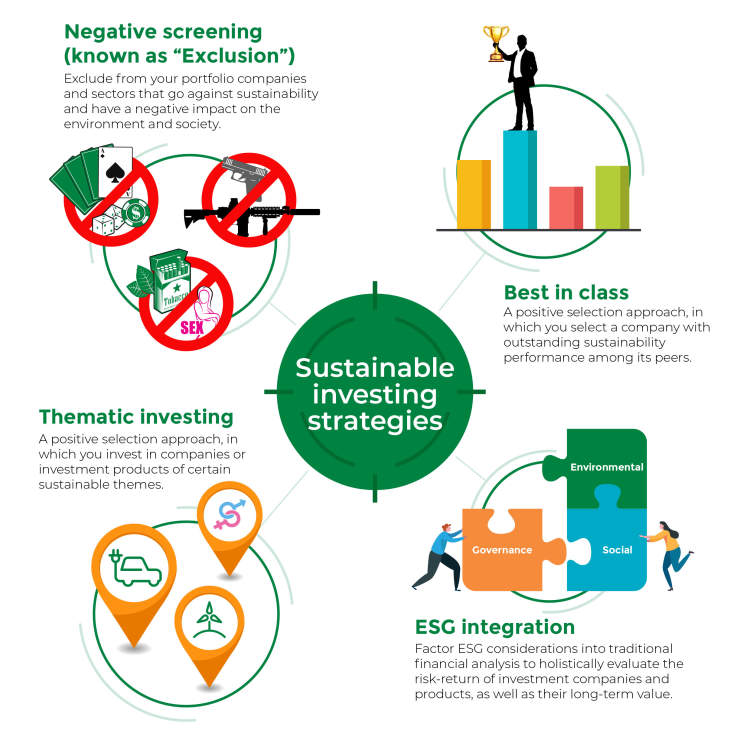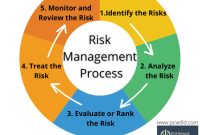Sustainable investing has been gaining traction in recent years, as more and more investors are looking to align their financial goals with their values. Exploring Sustainable Investing will explore the various ways in which you can use your investment to further your ethical, environmental, and financial goals.
This article will look into the various approaches to sustainable investing, the challenges and considerations to keep in mind, and the different strategies to increase the impact of your investments. Whether you are a new-comer to the field or a seasoned investor, this article will have something for you.
What is Sustainable Investing?
Sustainable investing, also known as socially responsible investing, is investing with the aim of making a positive impact on the world. It is an investment strategy which considers both financial return and social/environmental good to bring about a positive change. This means that sustainable investing focuses on quality companies that meet certain social and environmental criteria as well as those that yield financial returns.
In sustainable investing, investors assess the financial risk and rewards as well as the environmental and social impacts of their investments. This means that, instead of focusing solely on maximizing returns, they also seek to promote social and environmental benefits. This can be done through making investments into companies that have good labor practices, are committed to reducing their carbon footprint, or have a track record of investing in renewable energy.
In other words, sustainable investing is an investment strategy that takes into account both traditional financial performance and socially and environmentally responsible factors. By doing so, investors not only make returns, but also create positive outcomes for society at large.
Examples of Sustainable Investing
Some of the most common types of sustainable investing include:
- Environmental investing – Putting money into companies that are committed to reducing their carbon footprint and helping to mitigate climate change
- Social investing – Investing in companies with strong labor practices and those that are committed to the well-being of their workers
- Impact investing – Investing in companies with a mission to solve social and environmental problems
- ESG (environmental, social, and governance) investing – Investing in companies with good corporate governance standards as well as those that are focusing on environmental and social issues
Sustainable investing has become increasingly popular in recent years as investors seek to align their financial goals with their values and create a positive impact on the world. As more investors become aware of the options available to them, sustainable investing is expected to become even more popular in the years to come.
Why is Sustainable Investing Important?
Sustainable investing is becoming increasingly important in today’s economy. With climate change, resource depletion, and inequality becoming more obvious and pressing issues, an investor should not only care about financial returns but also about the ethical and environmental performance of the companies their money is funding.
Sustainable investing aims to create both positive financial and social returns while trying to reduce the negative environmental and social impact of investments. It is designed to invest in categories that are focused on environmentally friendly solutions, that do not exploit resources and are actively involved in creating a better society.
Benefits of Sustainable Investing:
- Investing in companies that reduce global warming and pollution;
- Providing financial gains while making a positive social and environmental impact;
- Ensuring companies are taking responsibility for the social costs of their production;
- Supporting companies that are actively engaged in finding more sustainable solutions.
Sustainable investing has the potential to be an important driver of long-term value and to benefit society as a whole in the future. By investing responsibly, investors can be actively involved in making our societies and economies more sustainable and equitable.
What are the Different Types of Sustainable Investing?
Sustainable investing focuses on achieving positive impacts by incorporating environmental, social and governance (ESG) criteria into the investing process. Sustainable investing typically involves screening portfolios and investments for ESG factors, applying sustainability criteria in the stock selection and portfolio construction process, investing in sustainable funds and establishing a framework for assessing the impact of a portfolio on a company’s sustainability performance. Sustainable investing strategies vary widely, but there are several common types of sustainable investing that are frequently used.
Socially Responsible Investing Strategies
Socially responsible investing, also known as SRI, is a process of investing responsibly without compromising returns. SRI typically involves screening out certain investments on the basis of socially responsible factors such as labor rights, alcohol and tobacco production, environmental impact, civil rights, human rights, animal rights and corporate governance.
Environmental, Social and Governance (ESG) Investing Strategies
Environmental, Social and Governance (ESG) investing is a type of sustainable investing strategy that incorporates environmental, social and governance criteria into portfolio selections and investments. ESG criteria includes a diverse range of factors from corporate policies on environmental protection, labor practice, human rights, animal welfare, board diversity, corruption levels and other areas.
Impact Investing Strategies
Impact investing is a type of investing that seeks to generate an explicitly measurable, positive impact that is aligned with the investor’s values or goals. Impact investments are made in low-income communities and in sectors such as affordable housing, healthcare, renewable energy, job training, education and clean water. Impact investments are typically made in private, made-for-purpose companies, with socially meaningful financial returns that are sometimes below market rates.
Green/Clean Investing Strategies
Green/Clean investing is a sustainable investing strategy that focuses on investing in companies that are developing, or have already developed, environmental technologies or services that have constructive outcomes for the environment. This includes investing in sectors such as renewable energy, clean water, green buildings, resource efficiency, sustainable transportation, and energy efficiency.
Sustainable Investment Managers
Sustainable investment managers are investment advisors that specialize in investing in sustainable investments. Sustainable investment managers typically employ a combination of socially responsible, ESG, and impact investing strategies to maximize a portfolio’s returns while minimizing environmental and social risks.
Microfinance Investing Strategies
Microfinance investing is a type of sustainable investing that seeks to fund businesses and entrepreneurs in developing countries. These businesses often lack access to traditional forms of capital and traditional sources of financing. Microfinance investments are typically made in the form of debt or equity investments, often via lending circles, and the returns generated are typically moderate.
Conclusion
When it comes to investing, sustainable investing can help you focus on long-term goals and maintain a portfolio that reflects your values. Sustainable investing can range from buying sustainable stocks and bonds, to funding companies that have social and environmental objectives, to investing in green technology. As investors become more aware of the sustainability of companies and industries, they are more likely to make their portfolios reflect their values. Sustainable investing can help ensure that the financial goals of investors are in line with their values.
Investors should discuss their values and financial goals with their finance professional to identify where they should invest. Finding the right products and services can be daunting. Investing with a financial planner that considers the long-term financial and sustainability goals of an investor may be the best option. Sustainable investing can be a great way to help investors reach their financial goals and make sure their values are reflected in their portfolio.




